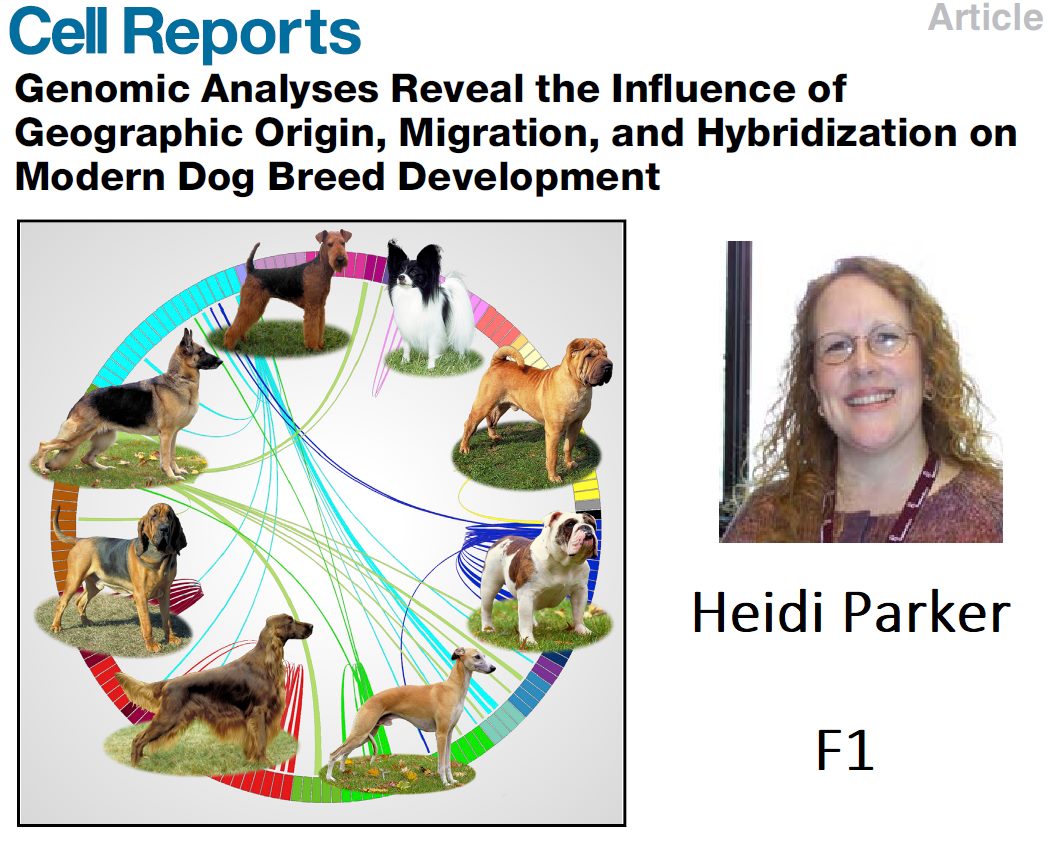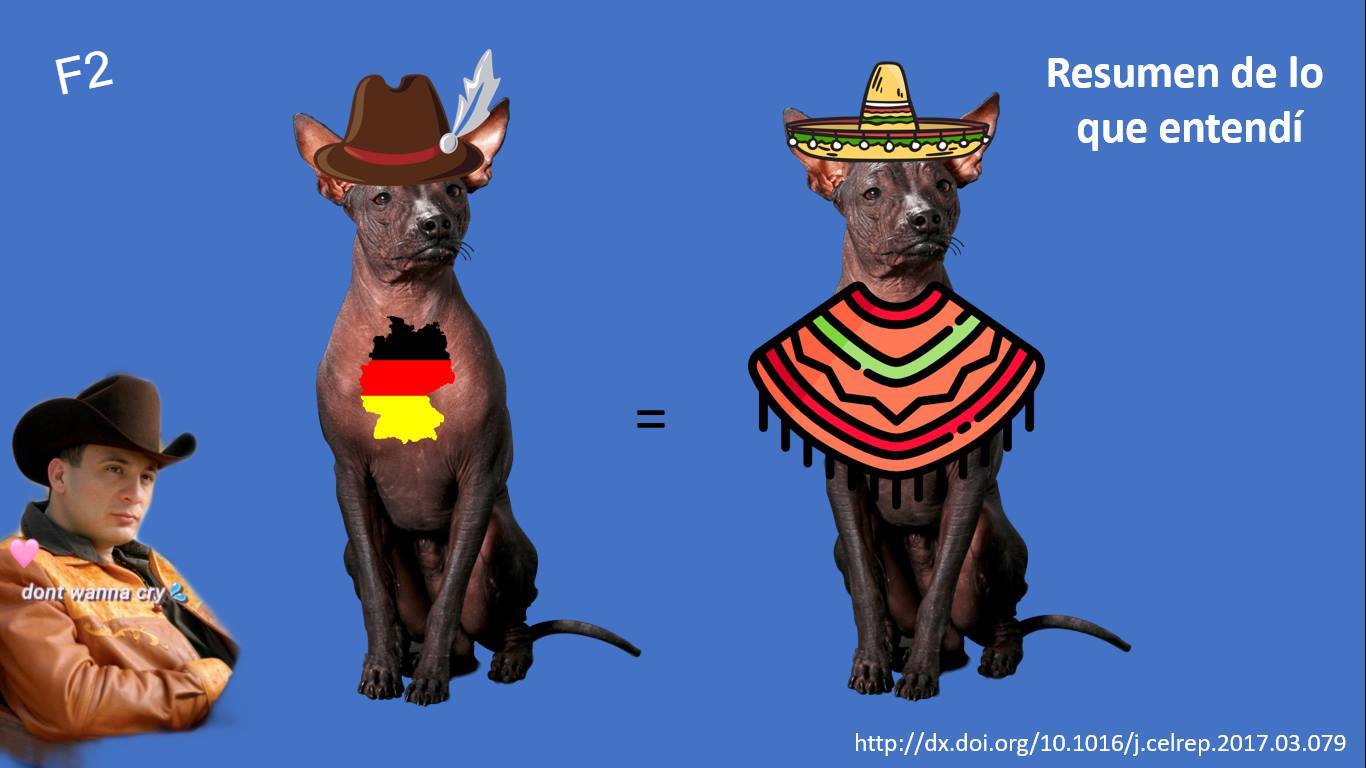Post 1: The genomics behind dog breeds 🐶
Published:
In memoriam of my friends Puguli, Blanca and Katy.
Dogs are one of the mammal species that has accompanied us in our evolutionary history, and because of that, they have been touched by our culture through artificial selection; an evolutionary force (almost) as powerful as natural selection. The diversity of breeds that exist today (just over 400) is largely due to the breeding clubs that flourished in the Victorian era, despite estimates suggesting that the first dogs emerged over 33,000 years ago. After so much time, one wonders: are there really pure breeds? Are they a mix? What relationship do they have with each other?
We can be reductionists and try to understand dog breeds through the set of nucleotide variants in their DNA, that is, their haplotypes. In 2017, Heidi Parker’s group studied the haplotypes of 161 breeds represented by 1346 dogs to see what relationship they have with each other and what stories they tell us (F1). With this information, it was possible to establish a mathematical model that approximates how long ago each of the breeds originated, as well as to know what types of congenital diseases they can share among themselves. Among many other things they found from the largest genomic dataset of dogs ever recorded (I don’t know if it still true in 2020), three aspects caught my attention:
- there is no bear dog (like this attempt at a joke)
- The diversity of breeds can be grouped into 23 groups
- What I thought were xoloitzcuintli does not exist.

As far as I understand, the Xolos were the buddies of the Aztecs who bit Mictlantecuhtli or Mictecacíhuatl, so they could go on their way to Mictlan listening to Valentínecatl Elizaldeacoatl (ggg); illustrating the Xolos as an endemic and characteristic species of Mexico. However, Heidi’s results indicates that in fact, Xolos share a considerable part of their haplotype with European breeds used in herding, which aligns with the period of conquest by the Spanish crown and how European farming and herding customs led to the crossbreeding of native Xolos with herding breeds. Destroying what the Xolo itself was. So when I see a Xolo again, I’m going to say “Du hast” (F2).
Goodbye

Note. This was written while listening to Valentínecatl Elizaldeacoatl… F. It’s better to listen to Jorge Drexler. https://www.youtube.com/watch?v=lIGRyRf7nH4
